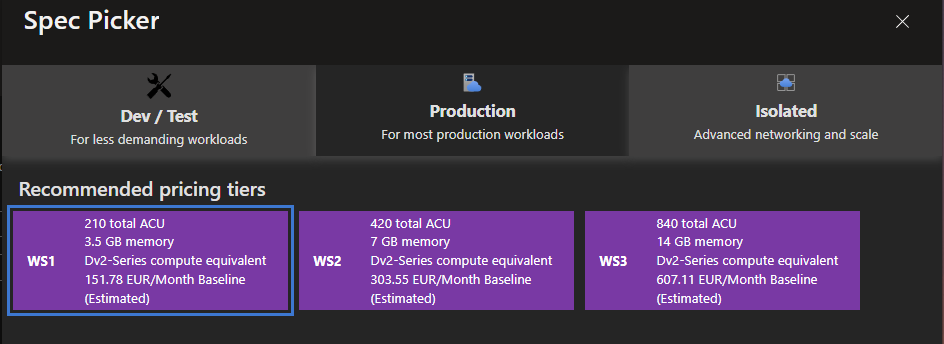Previously
In my previous blog I showed how to secure your Azure Logic Apps with Azure AD OAuth and with that I covered the basic security measures you can take, besides using a Private Endpoints in a VNET with a Standard plan, but I might touch on that subject on a later date.
While I'm on the subject of the Standard plan, which replaces the old Integration Service Environment (ISE), let's look at the main differences between the Standard and Consumption based plans, and how these differences can impact your integration projects.
First, let's define the two plans!
Standard plan
The standard plan is a fixed-fee pricing model for Azure Logic Apps, where you pay a fixed price for the hosting plan on which multiple Logic App instances can run, regardless of how often the logic apps runs or how many actions it performs. The standard plan comes withndifferent pricing tiers based on the performance you might need.
The standard plan currently comes with only one hosting plan available. This plan exists out of the follow three tiers.

The standard plan offers several advantages:
Scale
You can set the number of logic app instances that you want to create, and each instance will run on its own dedicated infrastructure. This means that you have more control over the scale of your logic apps, and you can easily adjust the number of instances to meet your workload needs.
Performance
It offers a higher level of performance compared to the consumption plan, as the logic apps are running on dedicated infrastructure. This can be important if you have a high volume of requests or need to process large amounts of data in a short time.
Monitoring and management
Monitoring and management features such as logging, alerts, and integration with Azure Monitor are included. It also includes additional features such as support for dedicated hosted custom connectors and VNET integration. Besides this, they are extremely portable as show in one of my previous blogssince they run on the Azure Function runtime.
Cost
The main advantage of the standard plan is the cost. If you have a predictable workload and a fixed number of actions, the standard plan can be more cost-effective compared to the consumption plan. However, if your logic apps have an unpredictable workload or variable number of actions, the consumption plan may be more cost-effective in the long run.
Consumption Plan
The consumption plan is a pay-as-you-go pricing model for Azure Logic Apps, where you are charged based on the actual number of actions that your logic app performs. The consumption plan is suitable for logic apps that have an unpredictable workload or variable number of actions. It is also a good choice if you only need to run your logic apps occasionally.
In the consumption plan, you are charged based on the number of actions and the duration of those actions for which you get 4.000 actions free per month. This means that you only pay for the resources that you use, and you can take advantage of the free grant to reduce your costs.
The consumption plan also offers several advantages:
Scale
The number of instances is not fixed, and your logic apps will scale automatically based on the workload. This can be more cost-effective if you have an unpredictable workload, variable number of actions and if your logic app only runs once per x time.
Performance
The performance may vary based on the workload. However, this is still suitable for logic apps with high volumes of requests or large amounts of data, as long as the workload is unpredictable and the number of actions is variable.
Monitoring and management
Monitoring and management features such as logging, alerts, and integration with Azure Monitor are included like in the Standard plan, but has limited integration options.
Cost
The main advantage of the consumption plan is the cost. If your logic apps have an unpredictable workload or variable number of actions, the consumption plan can be more cost-effective compared to the standard plan. You only pay for the resources that you use (€0.000024 per action), and you can take advantage of the free grant to reduce your costs.
Which to choose?
To decide which plan is best for your needs, you should consider factors such as the workload and frequency of your logic apps, as well as your budget and resources. If you have a predictable workload and a fixed number of actions, the standard plan may be the more cost-effective option. On the other hand, if you have an unpredictable workload or variable number of actions, the consumption plan may be the better choice.
What's next?
Recently I have been diving into Custom Connectors

